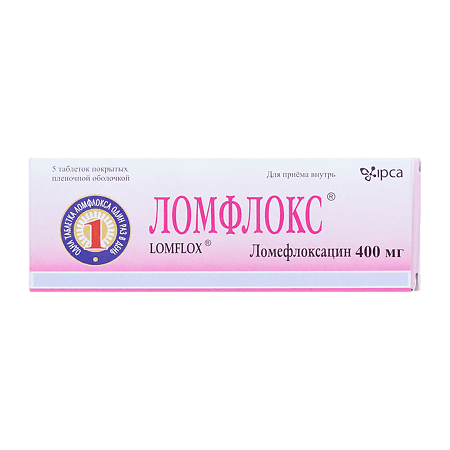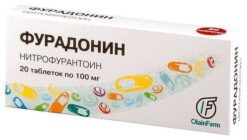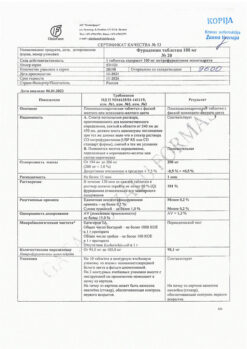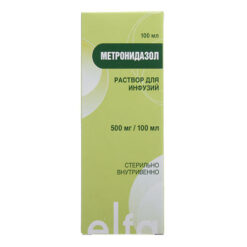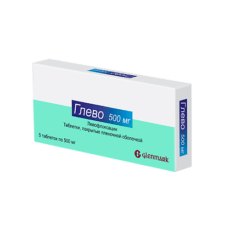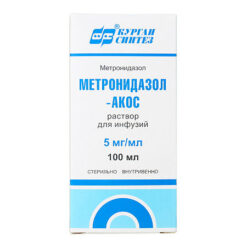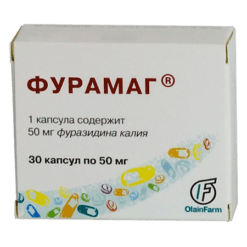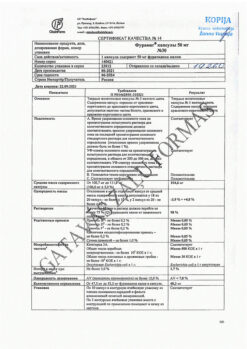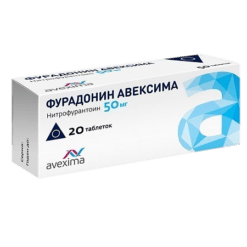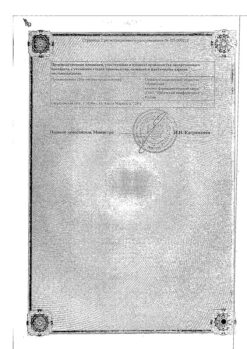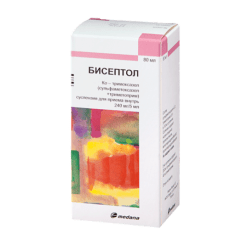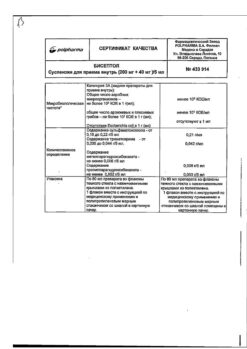No products in the cart.
Lomflox, 400 mg 5 pcs
€13.39 €11.16
Description
Lomefloxacin is a synthetic antimicrobial drug of fluoroquinolone group with a broad spectrum of bactericidal action. It blocks bacterial DNA-hyruase by forming a complex with its tetramer and disrupts DNA transcription and replication, leads to the death of the microbial cell.
It is active against Gram-negative and Gram-positive microorganisms: Gram-negative aerobes (Citrobacter diversus and freundii , Enterobacter cloacaae, aerogenes and agglomerans, Escherichia coli , Haemophilus influenzae, parainfluenzae, Klebsiella pneumoniae, oxytoca and ozaenae, Moraxella catarralis, Proteus mirabilis, stuartii, vulgaris, Pseudomonas aeruginosa, Morganella morganii, Legionella pneumophilla, Salmonella spp., Shigella spp. , Providencia rettgeri, Serratia liquefaciens and marcescens , Neisseria gonorrhoeae , Neisseria meningitidis), Gram-positive aerobes (Staphylococcus saprophyticus, aureus and epidermidis ), chlamydia, Mycobacterium tuberculosis (both extra and intracellular), some mycoplasma strains and uroplasm. In an acidic environment the efficacy decreases, resistance develops slowly. It has a pronounced postantibiotic effect. Streptococci (most groups A, B, D, G), Streptococcus pneumoniae, Pseudomonas cepacia, Ureaplasma urealyticum, Mycoplasma hominis and anaerobes are resistant to lomefloxacin.
Pharmacokinetics
Lomefloxacin is almost completely absorbed from the gastrointestinal tract after oral administration. When administered in a dose of 400 mg in the blood plasma Cmax is reached after 1.5-2 hours and is 3-5.2 mg/l. When administering the drug at a dose of 400 mg/day lomefloxacin concentration exceeds MPC for most pathogens for at least 12 hours.
The binding to plasma proteins is 10%. Lomefloxacin penetrates rapidly into most tissues. Concentrations in tissues and body fluids are generally 2-7 times higher than in plasma, especially in pulmonary macrophages, prostate tissues and urine. T1/2 of lomefloxacin is 7-9 h. About 70-80% is excreted unchanged in the urine within 24 hours.
In patients with impaired renal function the T1/2 of lomefloxacin is significantly increased.
Indications
Indications
urinary tract infections
prostatitis
gonorrhea
chlamydia
bronchitis, pneumonia
infected wounds
cholera (severe form)
tuberculosis.
Pharmacological effect
Pharmacological effect
Lomefloxacin is a synthetic antimicrobial drug of the fluoroquinolone group with a broad spectrum of bactericidal action. It blocks bacterial DNA gyrase, forming a complex with its tetramer and disrupts transcription and DNA replication, leading to the death of the microbial cell.
Active against gram-negative and gram-positive microorganisms: gram-negative aerobes (Citrobacter diversus and freundii, Enterobacter cloacaae, aerogenes and agglomerans, Escherichia coli, Haemophilus influenzae, parainfluenzae, Klebsiella pneumonia, oxytoca and ozaenae, Moraxella catarralis, Proteus mirabilis, stuartii, vulgaris, Pseudomonas aeruginosa, Morganella morganii, Legionella pneumophilla, Salmonella spp., Shigella spp., Providencia rettgeri, Serratia liquefaciens and marcescens, Neisseria gonorrhoeae, Neisseria meningitidis), gram-positive aerobes (Staphylococcus saprophyticus, aureus and epidermidis), chlamydia, mycobacterium tuberculosis (both extra- and intracellularly located), some strains of mycoplasma and uroplasma. In an acidic environment, efficiency decreases and resistance develops slowly. Has a pronounced post-antibiotic effect. Streptococci (most groups A, B, D, G), Streptococcus pneumoniae, Pseudomonas cepacia, Ureaplasma urealyticum, Mycoplasma hominis and anaerobes are resistant to the action of lomefloxacin.
Pharmacokinetics
After oral administration, lomefloxacin is almost completely absorbed from the gastrointestinal tract. When taken at a dose of 400 mg in blood plasma, Cmax is achieved after 1.5-2 hours and is 3-5.2 mg/l. When the drug is prescribed at a dose of 400 mg/day, the concentration of lomefloxacin exceeds the MIC for most pathogens for at least 12 hours.
Plasma protein binding is 10%. Lomefloxacin penetrates quickly into most tissues. Concentrations in tissues and body fluids are generally 2-7 times higher than in plasma, especially in pulmonary macrophages, prostate tissue and urine. T1/2 of lomefloxacin is 7-9 hours. About 70-80% is excreted unchanged in the urine within 24 hours.
In patients with impaired renal function, T1/2 of lomefloxacin increases significantly.
Special instructions
Special instructions
Prescribe with caution to patients with severe cerebral atherosclerosis, epilepsy and other diseases of the central nervous system.
If symptoms such as convulsions, agitation, photophobia, confusion, hallucinations appear during treatment, the drug should be discontinued.
During treatment, it is recommended to avoid prolonged exposure to sunlight or ultraviolet light. When used during lactation, it is necessary to decide on stopping breastfeeding.
May cause dizziness and impaired attention, so you should not engage in activities that require coordination (work on complex equipment, drive a car).
At the level of other quinolones, it may interfere with the metabolism of caffeine (tea/coffee), reducing clearance, prolonging half-life and increasing symptoms of caffeine overdose.
During the course of treatment, it is necessary to increase the amount of fluid consumed.
Active ingredient
Active ingredient
Lomefloxacin
Composition
Composition
1 film-coated tablet contains 400 mg of lomefloxacin hydrochloride
Contraindications
Contraindications
Hypersensitivity to the drug Lomflox.
Side Effects
Side Effects
Rarely: nausea, diarrhea, epigastric pain, headache, sleep disturbances, mood swings, agitation, tremor, depression.
With excessive exposure to ultraviolet rays, a mild photosensitivity effect may occur. In this case, treatment should be stopped. May cause arthropathy in a growing organism. Allergic reactions in the form of skin rash and other manifestations are possible.
Interaction
Interaction
Polysaccharides with antipepsin action or antacids containing magnesium or aluminum should not be used within 4 hours before and 2 hours after taking Lomefloxacin, as this reduces its bioavailability. Mineral supplements or vitamins that contain iron or minerals should not be taken within 2 hours of administration. There is evidence that H2 antagonists (cimetidine, ranitidine) may interfere with the elimination of quinolones, which leads to an increase in half-life and AUC.
Unlike other quinolones, it does not inhibit theophylline metabolism, so recalculation of the theophylline dose is not necessary.
Quinolones may aggravate the effect of oral anticoagulants warfarin or its derivatives when administered concomitantly. Prothrombin value or other coagulation parameters should be checked and monitored.
There is no cross-resistance with penicillins, cephalosporins, aminoglycosides, co-trimoxazole, metronidazole.
Lomflox is used in combination therapy with isoniazid, pyrazinamide, streptomycin, ethambutol.
Storage conditions
Storage conditions
In a dry place, protected from light, at a temperature not exceeding 25 °C
Shelf life
Shelf life
3 years
Manufacturer
Manufacturer
Ipka Laboratories Limited, India
Additional information
| Shelf life | 3 years |
|---|---|
| Conditions of storage | In a dry, light-protected place at a temperature not exceeding 25 °C |
| Manufacturer | Ipka Laboratories Limited, India |
| Medication form | pills |
| Brand | Ipka Laboratories Limited |
Related products
Buy Lomflox, 400 mg 5 pcs with delivery to USA, UK, Europe and over 120 other countries.

